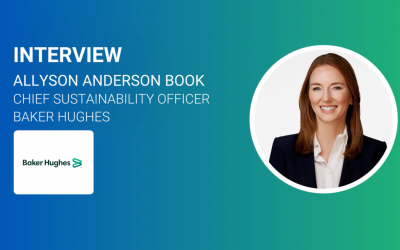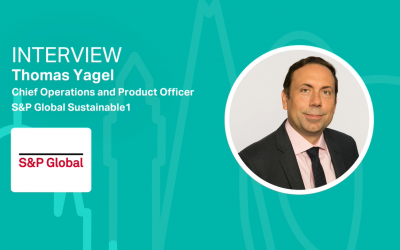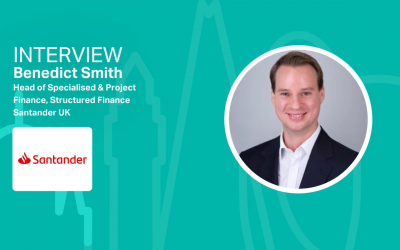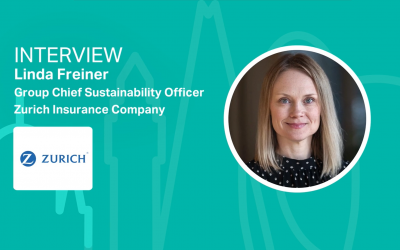Maha Chihaoui on Transforming ESG Analysis with AI-Driven Insights and Live Risk Detection
Following the Sustainable Investment Forum Europe, Climate Action spoke with Maha Chihaoui, ESG Analyst at SESAMm.
.png)
Maha Chihaoui is an ESG Analyst at SESAMm, where she leads the company’s ESG research and analysis efforts. With over four years at SESAMm, Maha has played a central role in developing and enhancing the methodologies behind the firm’s AI-powered ESG insights, including for controversy detection and UNGC violation screening.
1. Many ESG datasets rely on company self-reporting. What are the main limitations of that approach, and how does AI help address them?
Self-reported ESG data can be incomplete, inconsistent, or subject to bias, as companies may selectively disclose positive information while downplaying or omitting negative impacts. This lack of standardization also makes it difficult to compare ESG performance across different firms or industries. Additionally, self-reporting often lags behind real-time events, reducing the timeliness and relevance of the data
At SESAMm, we take a complementary, “outside-in” approach using AI. Our state-of-the-art AI algorithms analyze millions of public documents every day, including news articles, NGO reports, legal filings, and more, to detect ESG-related controversies and risks. This allows us to surface controversies in near real-time, helping investors get a more accurate and timely picture of actual behavior.
2. One of SESAMm’s latest innovations is real-time UNGC violation screening. Why is the UN Global Compact such a critical framework for investors and corporates today?
The UN Global Compact (UNGC) holds critical importance for investors because it carries strong global credibility as a United Nations–endorsed initiative, signaling alignment with universally accepted norms that enhance corporate reputation and stakeholder trust.
The framework provides holistic ESG guidance across key areas—human rights, fair labor practices, environmental sustainability, and anti-corruption—enabling companies to manage risks and opportunities comprehensively. By committing to UNGC principles, companies proactively mitigate legal, operational, and reputational risks associated with violations in these areas.
For investors, especially those subject to SFDR, the UNGC is directly linked to regulatory obligations. PAI indicator #10 specifically asks whether a company has violated the principles of the UNGC or other international norms. Our tool is built on a clear and concise methodology that enables thorough screening, and with the support of advanced AI models, it makes the assessment faster, more consistent, and scalable—efficiently identifying violations or risks of violating the UN Global Compact principles across thousands of companies, thereby supporting both compliance and active risk management.
3. How does SESAMm's AI-driven UNGC screening work in practice?
SESAMm's AI-driven UNGC screening identifies and classifies ESG controversy events based on their potential breaches of the UN Global Compact Principles into three risk levels:
- Violator (clear and severe breaches),
- Watchlist (possible but unconfirmed violations),
- Low Risk (concerns without clear evidence).
These risk statuses are dynamic, reflecting changes in a company’s behavior over time. The system emphasizes transparency by providing detailed explanations and audit trails for each event, enabling clients to investigate further rather than relying on opaque “black box” results. Ultimately, event-level flags can be aggregated to guide company-level decisions, such as exclusions from investment universes.
Clients can filter and explore these events within our dashboards, or receive alerts and reports as part of their risk monitoring workflows. What makes this unique is the combination of speed, granularity, and global scale—we’re able to capture and classify relevant controversies days or even weeks before they appear in traditional ESG data sets.
4. Based on your experience, how are investors using real-time controversy data in their decision-making processes?
We’re seeing investors use real-time controversy data in several key areas. During due diligence, it helps identify hidden risks in acquisition targets or portfolio companies—especially in private markets where traditional ESG data is sparse. For ongoing monitoring, firms use our alerts to track emerging controversies that may affect their holdings or counterparties, from suppliers to borrowers.
We also see it integrated into ESG scoring models, exclusion lists, and engagement strategies. In some cases, controversy data prompts further investigation or direct conversations with company management. It enables investors to act sooner and with greater confidence—before a risk becomes reputational or regulatory damage.
5. SESAMm recently launched new AI ESG Assessment Reports. How do these differ from traditional ESG ratings?
Traditional ESG ratings are often backward-looking and based largely on disclosed information. Our AI ESG Assessment Reports take a different approach—they’re built entirely on public data analyzed by AI in near real-time. The reports cover company-level ESG controversies, regulatory and industry pressures, sanctions screening, and more.
What makes them powerful is the speed and coverage. Users can generate a detailed ESG report on any public or private company—globally—in under 30 minutes. That includes small or mid-cap firms that may not be covered by major rating providers. It’s an accessible, scalable solution for firms that need faster, more flexible ESG insights in today’s fast-moving environment.






